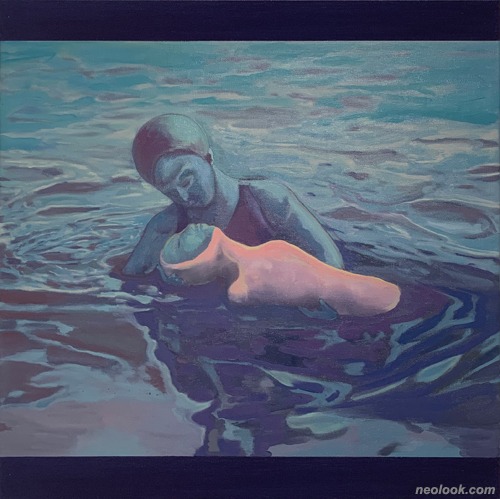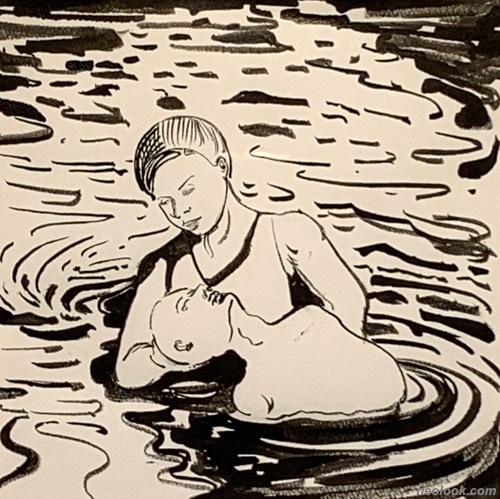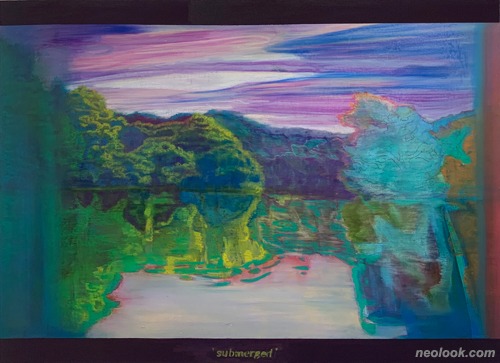
Exhibition Information




1. Dead man's float Is it a result or an end that a dead person floats? Is the result causal? Is it epic if it ends If it's neither one nor the other, is it close to the two? It is as if creating body resistance against the flowing tide is the result of both life and death, and at the same time a phenomenon that is close to ending. For example, what comes to mind when a person does not live in order to live is the same phenomenon, but the result and conclusion are what brings the phenomenon to the surface of interpretation and application. The two women teach and learn how to float, and witness each other alive or dead. The boundary between the surface and the bottom of the water on them is a kind of boundary of consciousness that determines life and death, and physical surfaces that allow each other to repeatedly identify themselves as alive and dead. Consider, for example, how desperate it is to wait for a person who has been in the water to come to mind. How dramatic it is to finally see a person emerge from the water and wait. Knowing what will come to mind is different, so this expectation is a wish for a life that seems permanent and a helpless understanding of irresistible death, and they are constantly repeated. 1-1 Resuscitation Resuscitation is not a technique. It's a useless technique if you can't revive it. He grinds hundreds of bouts of breaths for one breath. Everything is always in short supply, but it is perfect if you succeed. All of these are dramatic devices of life and death. Is it the art of life that the living can give to those who do not? But technology is not complete. Completion is not up to a man. 2. Analysis and Enlightenment So to speak, maybe, the result interprets our perception, but the ending disrupts our consciousness. What we can see from the status quo is the universal perception and individual symbol of an event or story. Death, sacrifice, judgment, and the response and preparation to all of this depend on how we can turn the scene phenomenon seen as a result into an individual symbol, the ending of an "incident and story." A causal process of physical and biological understanding and disaster and judgment of death with universal generalism. The justification for sacrifice and action is made by Mise-en-scene as a result. Screened images, like those of a film or video, allow events and stories to be interpreted through the area, drawings, and composition of the picture. However, those who are waiting to sink and rise in the water have individual symbols for different reasons for this interpretation. Death and sacrifice, judgment and corresponding reactions and preparation only solve the interpretation of perception when it comes to individual events and stories. 3. Pause and Play Pose-and-play can be translated to a stop and play, but I think it's more direct not to translate. Since both have active form meaning rather than passive, it can be said that they have a formal start to the point where they pose for a photo shoot and then self-destruct the stop and move again. For my work, the pose and play started with the principal act of the way films or images work, which I think can be understood as the 'inherited state and regeneration' of the subjective or subjective short shots. This is a calming section where events and stories pause for a moment to move on to the next stage, in which the scene has the present nature of being out of the chronological order or causal relationship. In addition, the skewed relationship between images and text in the picture is suggestive. Implicit relationships advance with expectations and experience, but eventually they do not match. The text or symbol in the picture is a painted object that is reminiscent of a kind of subtitle but does not describe or explain the image. In most of my paintings, this relationship appears to be more likely to be combined or removed as needed, rather than helping to interpret the image of a stationary state. This free and non-controvertible relationship makes the understanding of events and the outcome of stories fluid. The indeterminate state will persist even if it remains reserved forever, or if you press the play button again and add a story. Perhaps all scenes are the end or all scenes are the present.
